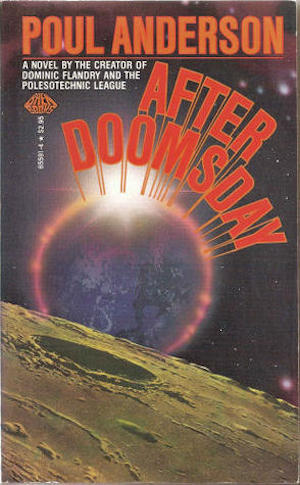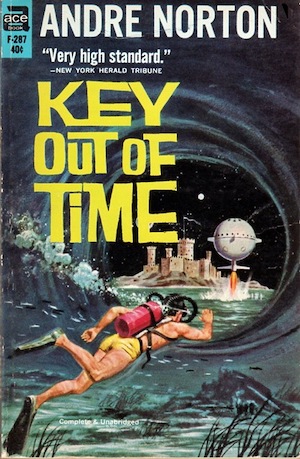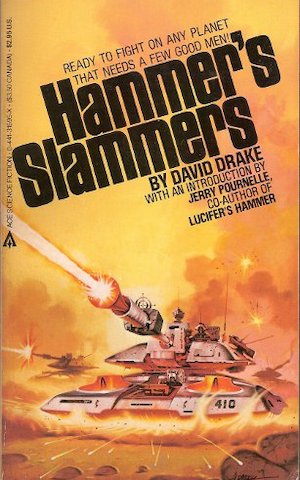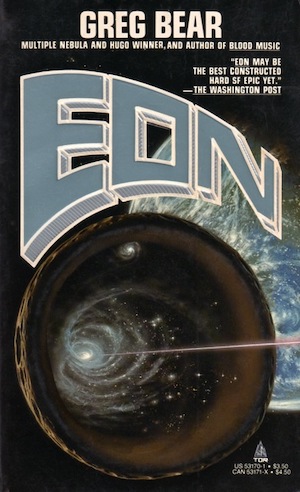I am now the proud owner of the recent 2300 2nd edition Bundle of Holding1. I already owned and had played the 2300 AD science fiction tabletop2 roleplaying game (mentioned in an earlier Reactor essay). Looking it over again, I was struck by the way that the game assumed that the Westphalian nation-state would persist far into the future. Where other SF TTRPGs feature planetary governments or even interstellar governments, 2300 offers nation-states3, many with familiar names, playing the same tired games on a much larger board.
Nation-states are comforting and familiar to readers struggling to absorb a new setting. More important, their present-day rivalries and conflicts can be projected into the future, making for instant plots readers will easily grasp.
GDW (and now Mongoose), the publishers of 2300 AD, were by no means the first people to see the plot potential of nation-states in SPAACE. Consider the following (pre-2300 AD) SF novels.
The Outward Urge by John Wyndham (1959)

The US and USSR are the only superpowers, but Britain sees itself as the top second-tier nation. Thus, while most nations leave the space race to the Americans and the Russians, the United Kingdom develops first a space station, then a moonbase, both equipped with the latest in interplanetary ballistic missiles. The UK will do its part to preserve the delicate balance of power and thus global peace.
After a brief cataclysm, peace prevails in the northern hemisphere: Billions of radioactive corpses cannot have conflicting national agendas. Brazil sees an opportunity and claims all space as a Brazilian province. It’s a bold gambit sure to succeed…unless Brazil has rivals amongst the surviving nation-states in the southern hemisphere who resent Brazilian effrontery. Of course there are rivals.
The Outward Urge is a fix-up, with four or five sections depending on the edition. All feature a member of the Troon family. Most of them feature a moral: one should under no circumstances send Troons into space4. With a single exception, spacefaring Troons are doomed. The exception is the Troon who plays a role in depopulating the northern hemisphere.
After Doomsday by Poul Anderson (1962)

Rather than present a unified front when aliens contacted Cold War Earth, the nations of Earth collectively shrugged their shoulders and continued with business as usual. None of the starfaring aliens seemed interested in terrestrial entanglements beyond trade. Humans were free to pursue their independent destinies.
American starship Benjamin Franklin returns to a dead Earth. Off-world trade has, it seems, provided the means for global suicide. An excess of caution led America to staff its ship with men. Humanity is a dead clade walking… unless the Benjamin Franklin can join the women-crewed Europa. But how can two starships find each other in a galaxy the size of the Milky Way?
Protagonists who need to find each other would do well to avoid being Poul Anderson characters, as Anderson has a rare grasp of scale.
I’ve often ear flicked Anderson for his treatment of women characters. However, in this specific case I cannot help but notice that the strategies pursued by women do not produce human corpses at anything like the rate that the men’s bold schemes do. Good thing men are not the bottleneck on reproductive rates.
Key Out of Time by Andre Norton (1963)

Not all of America’s tampering with alien technology has been disastrous. Some has been calamitous. Nevertheless, if America does not colonize the stars using technology appropriated from the alien Baldies, the Commies definitely will. Thus, America has no option but to forge ahead.
Hawaika seems to be a paradise world: vast seas dotted with idyllic little islands. However, old Baldie maps make clear that some monumental event reshaped the planet. It’s only prudent for the Americans to use their time-viewing technology to see what that event was, in order to avoid repeats. Less prudent: getting swept back through time to witness the disaster in person.
The Time Trader series, of which Key Out of Time was the fourth book, is a rare exception to a common pattern in SF. Faster-than-light plus relativity should equal time travel. Generally speaking, SF authors prefer to ignore that. Not only does Norton embrace it, the US got time machines before it swiped star drives from the Baldies.
Hammer’s Slammers by David Drake (1979)

The development of starflight presented Earth’s nation-states with another venue for national glory. For the price of a national airline, countries could plant colonies on other worlds. Because pride was a factor but economic prudence was not, the result is an abundance of dismal worlds whose deficits include an inability to co-exist in the face of any significant difference.
What is misfortune for the colonist on the street is a golden opportunity for mercenaries like Col. Alois Hammer and his Slammers. In a galaxy filled with mutual loathing, greedy imperialists, and reluctant victims, there is always demand for skilled soldiers-for-hire. Fortune awaits! For the mercenaries who survive, at least.
For the most part, mercenary career paths involve dying on the job, being too horribly injured to continue, or burning out from the endless horror. Not sure what the pension plans look like. Hammer does considerably better, promoting himself to dictator for life of a developed world. Hammer might last as long as António de Oliveira Salazar! Or if he is less lucky, as long as Hezekiah Ochuka.
Eon by Greg Bear (1986)

Seven years after the Little Death, the Cold War is enormously complicated by the appearance of an asteroid-sized spaceship. Nicknamed “the Potato” by the Russians, the craft takes orbit around Earth. Then… nothing. The vessel appears empty, available for some ambitious nation to commandeer.
By 2005, certain facts have been discovered about the Potato. It comes from the future, or at least a future. The Potato’s history books document 1993’s Little Death, with its scant four million dead. Those texts also mention 2005’s Death, which killed 2 ½ billion people and nearly ended civilization. Will history repeat itself? Or should the Americans and Russians be worried about an even more existential threat from the distant future?
This being a Greg Bear novel, it is almost a guarantee that as bad as current circumstances are, things can always get much worse. However, as the setting clearly features alternate universes, even if this timeline’s humans are expunged, they die knowing that other timelines may have fared better5.
These are only a few examples of the plot potential inherent in assuming nation-states will survive into the future. There are many such stories out there. Ambitious commentors may feel free to provide examples in comments below.

